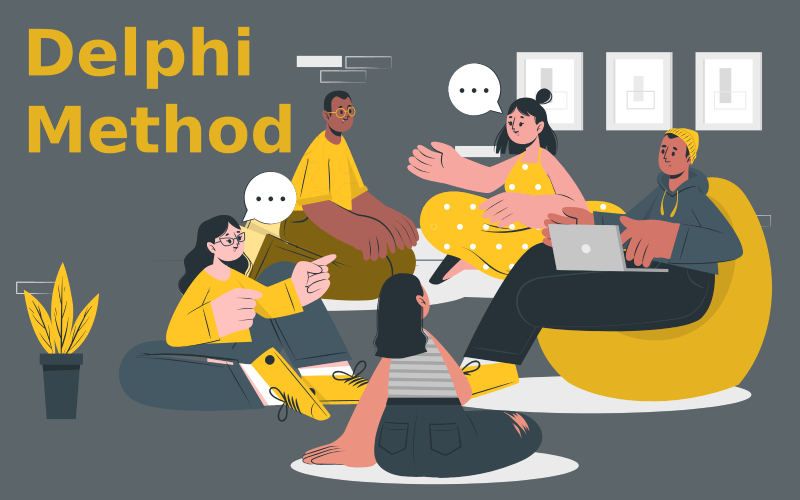Overview
In an increasingly volatile and uncertain world, organizations face the daunting task of preparing for the unknown. Traditional strategic planning methods often fall short in addressing the complexities of uncertain futures. Enter scenario planning—a powerful tool designed to help decision-makers anticipate and adapt to a range of possible futures. In this blog, we'll explore the principles, process, and applications of scenario planning, shedding light on its significance in navigating uncertainty.
Table of Contents
Understanding Scenario Planning
Scenario planning is a strategic foresight technique that involves creating and analyzing multiple plausible future scenarios to inform decision-making and strategy development. Unlike traditional forecasting, which relies on predicting a single future outcome, scenario planning embraces uncertainty by exploring diverse futures and their implications. By considering a range of scenarios, organizations can better prepare for uncertainty, mitigate risks, and identify strategic opportunities.
Key Components of Scenario Planning
Identifying Driving Forces: Driving forces are the key factors or uncertainties that shape the future landscape. These may include technological advancements, regulatory changes, economic trends, social shifts, geopolitical developments, or environmental factors. Identifying driving forces is essential for constructing meaningful scenarios.
Scenario Development: Scenarios are plausible narratives or stories that describe alternative futures based on different combinations of driving forces. Each scenario represents a distinct trajectory or set of conditions that could unfold over time. Scenarios should be internally consistent, plausible, and relevant to the organization's context.
Scenario Analysis: Once scenarios are developed, decision-makers analyze their implications for the organization. This involves assessing how each scenario would impact the organization's objectives, operations, stakeholders, and competitive landscape. By exploring the opportunities and risks associated with each scenario, decision-makers can develop more robust strategies.
Strategy Formulation: Based on the insights gained from scenario analysis, organizations develop strategic responses to prepare for and adapt to the future. Strategies may involve identifying early warning signals, building flexibility into plans, diversifying risk, or capitalizing on emerging opportunities. Scenario planning helps organizations proactively shape their future rather than merely reacting to it.
Steps of Scenario Planning
Define the Scope: Clearly define the scope and objectives of the scenario planning exercise. Determine the time horizon, focus areas, and stakeholders involved in the process.
Identify Driving Forces: Identify the key drivers of change that are likely to shape the future environment. Conduct a comprehensive analysis of internal and external factors that may influence the organization's future trajectory.
Develop Scenarios: Construct multiple scenarios by combining different combinations of driving forces. Scenarios should be plausible, divergent, internally consistent, and relevant to the organization's context.
Analyze Implications: Analyze the implications of each scenario for the organization's objectives, strategies, operations, and stakeholders. Identify opportunities, risks, challenges, and critical uncertainties associated with each scenario.
Develop Strategies: Develop adaptive strategies that enable the organization to respond effectively to the uncertainties and challenges posed by each scenario. Consider contingency plans, adaptive measures, and strategic initiatives to build resilience and capitalize on opportunities.
Monitor and Adapt: Continuously monitor the external environment for changes and signals that may indicate shifts in the likelihood or impact of different scenarios. Regularly review and update strategies based on new information and insights.
Applications of Scenario Planning
Strategic Planning: Scenario planning helps organizations develop robust strategies that are flexible and adaptive to uncertain futures. It informs strategic decision-making, risk management, and resource allocation processes.
Risk Management: Scenario planning enables organizations to identify and assess risks associated with different future scenarios. By understanding the potential impacts of various risks, organizations can develop proactive risk mitigation strategies.
Innovation and Opportunity Identification: Scenario planning fosters a culture of innovation by encouraging organizations to explore alternative futures and identify emerging opportunities. It helps organizations anticipate market shifts, technological disruptions, and changing consumer preferences.
Policy Development: Governments and policymakers use scenario planning to anticipate and address complex societal challenges, such as climate change, demographic shifts, or geopolitical instability. It informs policy development, strategic planning, and resource allocation processes.
Significance of Scenario Planning
Enhanced Resilience: Scenario planning helps organizations build resilience by preparing for a range of possible futures and developing adaptive strategies. It reduces vulnerability to unexpected disruptions and uncertainties.
Strategic Agility: Scenario planning enhances strategic agility by enabling organizations to anticipate changes in the external environment and adjust their strategies accordingly. It promotes proactive decision-making and flexibility in responding to emerging opportunities and threats.
Improved Decision-Making: Scenario planning provides decision-makers with insights into the potential consequences of different future scenarios. It facilitates informed decision-making, consensus-building, and alignment of strategies across the organization.
Stakeholder Engagement: Scenario planning encourages stakeholder engagement and collaboration by involving diverse perspectives in the exploration of alternative futures. It fosters dialogue, shared understanding, and collective action toward common goals.
Conclusion
In conclusion, scenario planning is a valuable tool for organizations seeking to navigate uncertainty and build resilience in an ever-changing world. By exploring alternative futures, analyzing their implications, and developing adaptive strategies, organizations can better prepare for the challenges and opportunities that lie ahead. Embracing scenario planning enables organizations to proactively shape their future and thrive in an uncertain environment.













